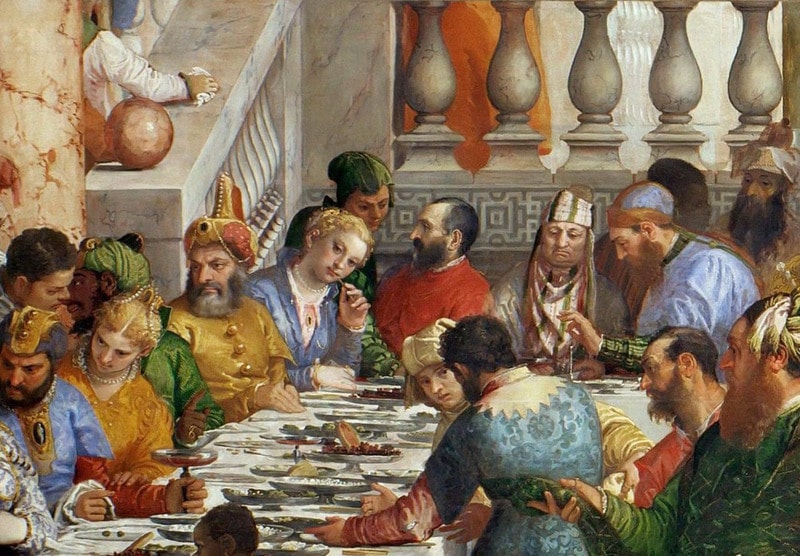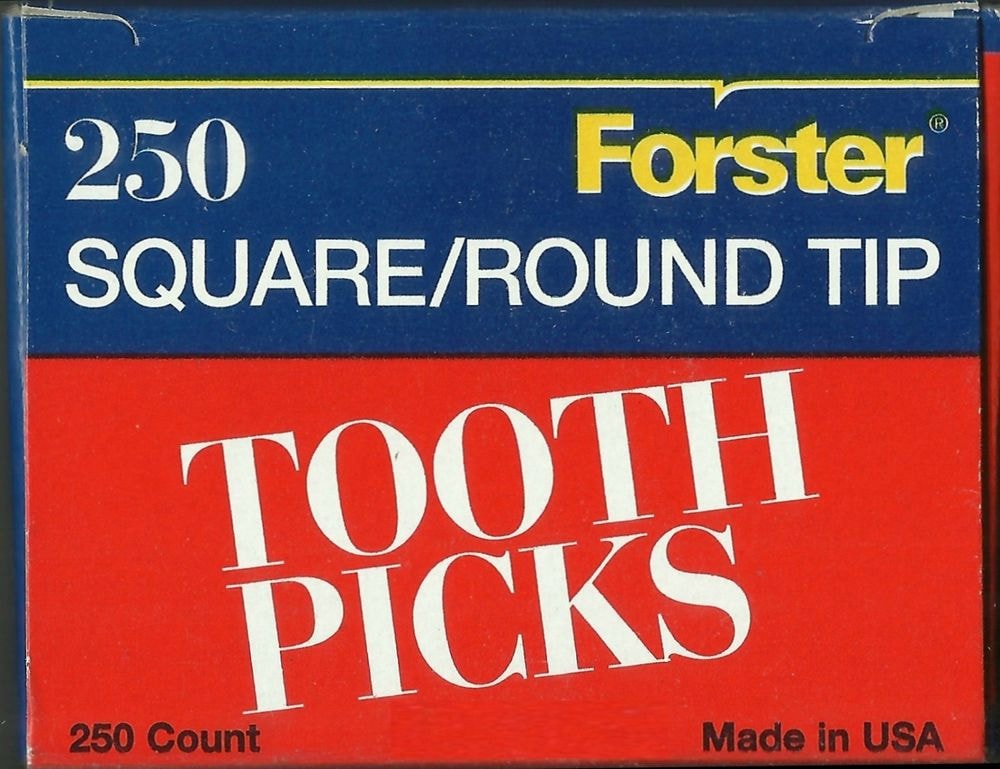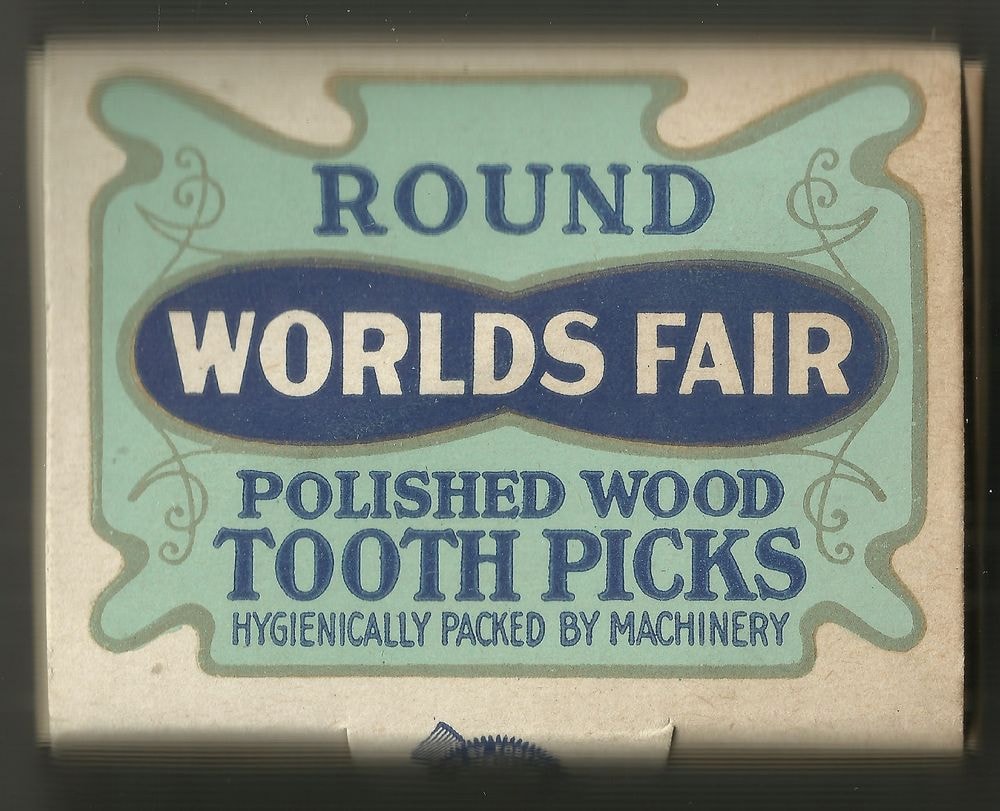
While floss (!) and interdental brushes offer safer solutions for cleaning in between teeth, people have been picking their teeth for hundreds of years.
Just ask Washington Post reporter Sarah Kaplan, who recently discussed evidence that Neanderthals used toothpicks for dentistry.
Signs of toothpick use have been seen in Neanderthal skulls, according to James Wynbrandt in The Excruciating History of Dentistry: Toothsome Tales & Oral Oddities from Babylon to Braces. “A contemporary anthropologist claims ‘As far as can be empirically documented, the oldest demonstrable human habit is picking one’s teeth.'”
“While the humble wooden toothpick is endangered by the modern plastic one and the world’s largest toothpick center has closed, let us look at a short history of the toothpick.”
- Toothpicks were used throughout ancient Asia, India, and the Middle East, and made from all sorts of items, including sharpened sticks, and animal quills, to fancy ones made of bronze, iron, silver, and gold.
- The Greeks used blades of straw, reeds, or a quill to clean the teeth.
- Agathocles, the hated ruler of Syracuse, was assassinated by a toothpick in 289 B.C. ; it had been soaked in poison.
- Romans, who valued oral hygiene, regarded toothpicks among one of the necessities needed by ladies of fashion.

A detail from Paolo Veronese’s 1562 painting “The Wedding At Cana”, with a woman using a toothpick.
- In France during the Renaissance, toothpicks could be found stuck in desserts as well as proffered along with a plate and napkin at each place setting. They took on all the ornamentation and trappings of other personal luxury products of the time. Made of gold, silver, or ivory, they were sometimes set with precious jewels and inlaid with gems. Some were worn on chains around the neck. Picking the teeth was an upper-class trait, lower classes being unable to afford toothpicks. The poor just had to put up with food between their teeth.
Who created one of the first mass-market toothpicks?
By the early 19th century, toothpicks were still out of the reach of most consumers, although things were beginning to change. For example, Monsieur Bardin of Joinville-le-Pont, near Paris, found the invention of the steel pen had ruined the market for the quills from his two million geese. Quickly changing his production methods, he created a quill toothpick, instead, which became one of the first mass-market toothpicks.
Nuns got in on the act? You bet.
Over time, small centers of toothpick manufacturing have sprung up. As Henry Petroski writes in his indispensable book on toothpicking, the earliest organized manufacturers of toothpicks were the nuns of the Mondego River valley in Portugal, who in the 16th Century made toothpicks to sell alongside the sticky confections that were their main source of income.
These toothpicks, made of orangewood, found their way to the Portuguese colony of Brazil where natives started copying them, and it was here in the middle of the 19th century that a Bostonian named Charles Forster had his first fateful encounter with them.

Forster was on business in Brazil in the mid-1800s when he saw these large, hand-whittled toothpicks from Portugal being sold in big boxes as disposable appliances. He bought some and sent them to his wife in Boston, who shared them with guests. They must have taken to them, for when Forster returned to Boston in 1865, he went to work for a wooden shoe-peg manufacturer and began experimenting with equipment in the factory, trying to develop a machine that could cut toothpicks. By 1869 he’d achieved success.
How many toothpicks can a hand-whittler make in a day? Inquiring minds want to know.
The machine he invented could make as many toothpicks in a minute as a hand-whittler could make in a day. Forster found white birch worked best, which he found in abundance in Maine. Yet the world did not beat a path to his door. Boston restaurant owners ignored his product.
“They didn’t think that proper Bostonians would want to sit around after dinner picking their teeth with a slender piece of wood,” Charles Forster lamented.
The turnaround:
At Boston’s Union Oyster House, a restaurant that’s been in business since 1826, Forster had recruited some Harvard scholars with the promise of a free meal if they’d help him in his plan to sell toothpicks.
The plan, as Forster outlined it later:
* After dinner, the Harvard student, in a loud voice, was supposed to ask his waiter for a toothpick.
* If the restaurant didn’t have any, then the young man was supposed to complain loudly, and inform the waiter that he would never again eat in the establishment.
* After five or six Harvard men had stormed out following their well-rehearsed display, the Oyster House started buying Forster’s toothpicks.
Forster moved his toothpick factory to Maine a few years later to be closer to his raw material. He opened his first toothpick mill in an old starch mill in Strong in 1887. The factory improved upon the early, flat toothpick, eventually perfecting the round toothpick that tapered on both ends. Now toothpicks were easily and cheaply made (unlike during the French Renaissance!) and the poor could pick at their teeth as well as the rich.

An early Forster’s box.
Soon Forster was producing 500 million toothpicks a year and demand was outstripping supply. Competitors sprang up throughout Maine.

Strong, Maine’s claim to fame.
By the mid-1940s, toothpick production was at its height.
Strong remained at the center of toothpick production, even emblazoning its fire engines with the words, “Toothpick Capital of the World”. But in the post-war years, nylon floss cut into the market, as did cheap imports from China and Southeast Asia. What’s more, picking one’s teeth at the table became something of a social faux pas, something you shouldn’t be seen doing. Sales plummeted in the 1980s. Strong attempted to diversify, with the Forster firm inventing toothpicks with square middles that prevented them rolling off the table, but it was too little too late. Its toothpick mills slowly began to shut down.
The Forster Manufacturing Company’s mill was the last to go, closing in 2003. Strong no longer is the Toothpick Capital of the World.
At least the trees are safe.


